Paul Morrissey’s Gothic horrors
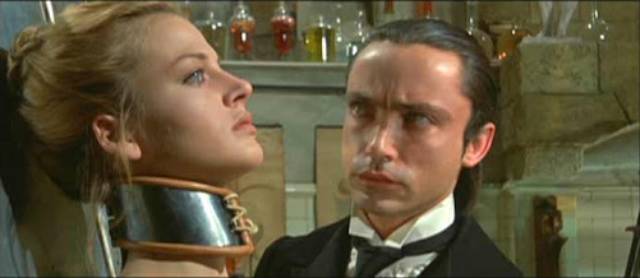
Once upon a time, before we achieved total media saturation, it was possible to encounter something about which you knew little or nothing. Surprise and discovery were much more common experiences. In 1973, I didn’t know who Paul Morrissey was … heck, I barely knew who Andy Warhol was. I had never seen a 3D movie, and I knew nothing of Italian Gothic cinema. I did know the name Frankenstein, however, so when Morrissey’s Flesh for Frankenstein – or as it was known by its U.S. title here in Winnipeg, Andy Warhol’s Frankenstein – showed up, that name and the ads mentioning 3D were more than enough to get me to the theatre.
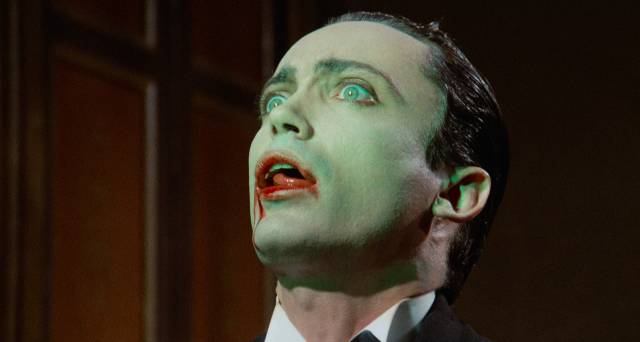
Looking at my notes, I see two salient points – I gave it only two stars, yet I went to see it twice. This suggests that I didn’t think it was particularly good as a movie, but the 3D and the comically excessive gore appealed to me. Over the ensuing decades certain images stuck vividly with me, but I didn’t have an opportunity to see it again until I bought a used copy of Criterion’s 1998 DVD release twenty years ago. (I also bought Criterion’s Blood for Dracula DVD at the same time.) A lot had changed by then; I was almost thirty years older, I’d seen thousands of movies, including a few in 3D during the format’s revival in the ’80s. The technology had evolved and by then seemed less likely to produce headache-triggering eyestrain. But the DVD, of course, wasn’t in 3D – in fact, it wasn’t even an anamorphic transfer! – so all I had was the movie itself and, with so much more experience behind me, I could finally appreciate what Morrissey had done, seeing now not only a very well-constructed narrative, but also multiple layers of satire, overt comedy, transgressive sexuality and even genuine pathos. There was far more to the film than just the gimmicks which had appealed to me in 1973.
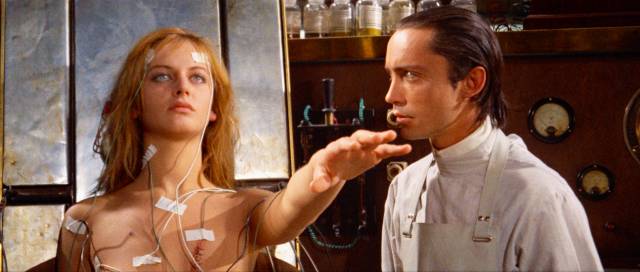
Over the next two decades, I kept an eye open, hoping that a new, improved edition might appear, but apart from another problematic DVD a few years later, I hoped in vain. However, that has all changed now. Back in June, Severin released a 4K restoration of Blood for Dracula in a dual-format 4K UHD/Blu-ray edition, plus soundtrack CD. Their announcement was immediately met with a flood of enquiries about why they weren’t first releasing Flesh for Frankenstein. Interest was so intense that Severin were forced to say that another company had the rights to the earlier film – and Vinegar Syndrome were pushed to announce prematurely that they were working on a comparable restoration which would also include the film in 3D. But it wouldn’t be ready until their Black Friday sale in November.
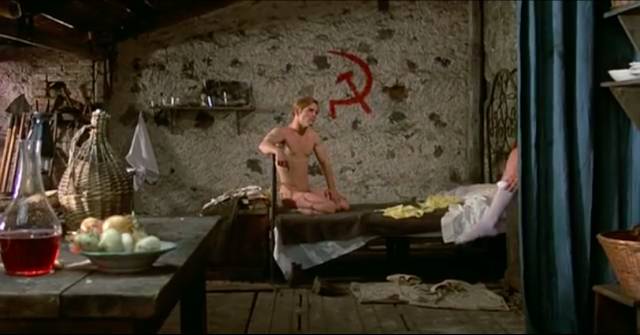
And so, although I received my copy of Severin’s Blood for Dracula with their June bundle, I held off watching it until I finally got my VS Flesh for Frankenstein in early December. In fact, I ended up waiting even longer because I was planning to watch that on my friend Steve’s 3D system. But rising Covid rates got in the way and weeks passed until I finally couldn’t wait any longer … although not optimal, I had to set aside the digital 3D experience and watch the disk’s anaglyph option with the awkward cardboard red-and-blue glasses provided. This did have the advantage of bringing back strong sense memories of those first viewings in 1973, though with a bit less eyestrain. But the biggest disadvantage is that the anaglyph version, viewed through those plastic filters, renders the film’s sumptuous colours as virtually monochrome. The only colour that really comes through is green, so at least grass and trees look relatively normal, but flesh is mostly gray and all that blood is black.
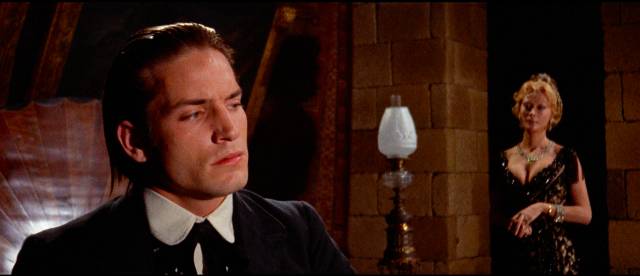
However, while the colour is adversely affected, Morrissey’s use of the 3D itself is very effective. There are all those witty, poke-in-the-eye moments which thrust glistening viscera into your lap, but also a great sense of overall depth, making excellent use of the spacious sets and the landscape around the Baron’s castle. Considering the rough, vérité nature of Morrissey’s previous work, Flesh for Frankenstein is all the more remarkable. Making use of all the resources available at an Italian studio, even on a relatively small budget (about $300,000), the film has a formal elegance which is enhanced by the skilful use of 3D. It is one of the film’s real accomplishments that all this elegance is put in the service of a story so perverse that even a few years earlier it would have been almost impossible to get it past the censors.
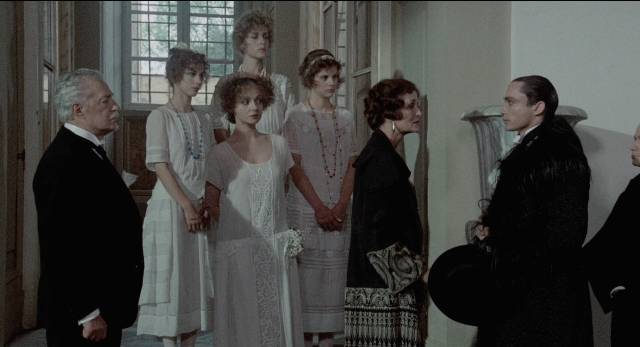
Paul Morrissey had previously developed his filmmaking skills under the auspices of the Warhol Factory, initially aiding Warhol in technical matters before gradually taking on a more creative role. He began to introduce things like structure and narrative where Andy’s work had been aggressively anti-cinematic – he liked to turn on the camera and just leave it to record whatever was happening in front of the lens. Morrissey used a loose, vérité style to depict the lives of outsiders with a surprising degree of empathy given that personally he was a conservative Catholic. His movies about gays, drug addicts and transgender characters laid the groundwork for what he eventually brought to the horror genre.
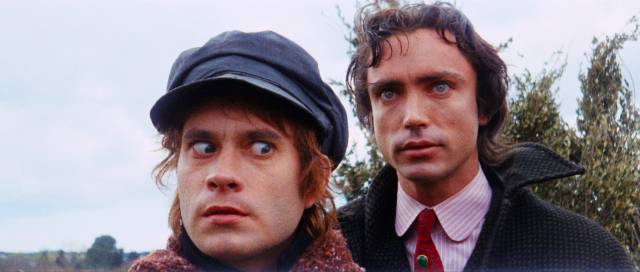
During that formative period, Morrissey remained somewhat in Warhol’s shadow – most of his movies had the possessive “Andy Warhol’s” attached to the title, something which in North America continued with the pair of Gothic horrors although Warhol had nothing to do with them. Morrissey had tried to break away in 1972 with a film shot in Paris, but L’Amour wasn’t a success and he followed it with one more Factory feature, Heat (1972), before taking a completely unexpected turn the next year.
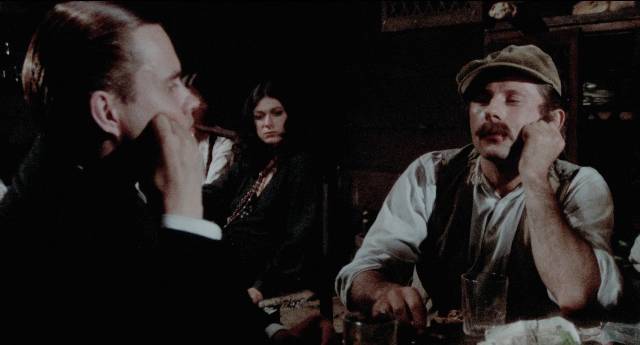
That new direction was prompted by a suggestion from Roman Polanski, who had been toying with the idea of shooting his new movie in 3D. (Realizing that this would be pointless as well as expensive, Polanski eventually shot What? [1972] flat.) Polanski urged Morrissey to make a 3D horror movie, an unexpected idea given the nature of the Factory films. And yet, with no prior background or interest in the genre, it somehow appealed to Morrissey and when Italian producer Carlo Ponti asked him how much he would need for such a project, he replied with little thought “Three-hundred-thousand,” to which Ponti immediately replied that he would put up $600,000 if Morrissey would make two movies. In retrospect, this all seems absurdly random and fortuitous, but what’s really surprising is how Morrissey rose to meet the opportunity.
*
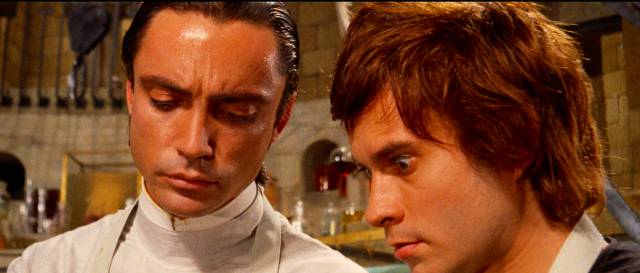
Flesh for Frankenstein (1973)
The first fruit of this strange business arrangement was greeted with a decidedly mixed response. Superficially, Flesh for Frankenstein had the trappings of its genre – an obsessed scientist determined to “create life”, an old castle, a devoted assistant, a creature which fails to meet its creator’s expectations, cadavers and entrails – but the tone works against easy interpretation. Is the whole thing a put-on? Is it meant to be a joke? But despite the obvious extremes and absurdities, the cast plays everything with dead-pan seriousness and there are moments of genuine pathos.
And then there’s the whole perverse sexual atmosphere which permeates everything. The Baron (Udo Kier) is married to his sister the Baroness (Monique van Vooren), with whom he has two children, Monica (Nicoletta Elmi) and Erik (Marco Liofredi), a creepy pair who spy on their parents and play games emulating what they see in the lab. The Baron is disgusted by sex and his frustrated wife brings lovers into the castle disguised as servants. The latest is walking libido Nicholas (Joe Dallesandro), who makes no attempt to conceal his contempt for the degenerate aristocracy as he predicts their imminent fall to the proletariat.
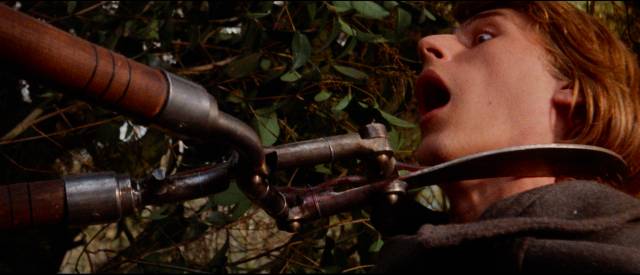
Given the Baron’s feelings about sex, it’s both paradoxical and understandable that his research is aimed at creating an artificial race which can take over the despised animal instinct to reproduce, and he has put together both male and female creatures. But his work has shifted his sublimated sexual urges and now he’s aroused by corpses. Rejecting his wife’s physical demands, he reaches into dead bodies and fucks their entrails – as he says to his fascinated assistant Otto (Arno Jürging) after one steamy session, “To know death, Otto, you have to fuck life in the gall bladder.” This, perhaps the most famous line in the film, was inspired by Morrissey’s intense dislike of the overwrought philosophizing about life and sex in Bernardo Bertollucci’s Last Tango in Paris (1972).
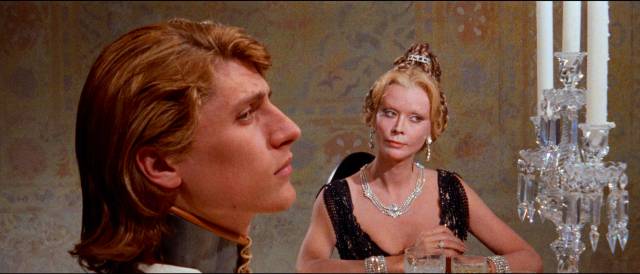
Otto, devoted to the Baron and his work, has no experience of his own and takes his cues from what he sees, with eventually catastrophic results for the servant Olga (Liu Bosislo) and the female creature (Dalila Di Lazzaro). But before things go very wrong, the Baron takes Otto to spy on the local brothel, looking for the right man with strong animal appetites to provide the head for his creature. A series of misunderstandings lead them to target Sacha (Srdjan Zelenovic), best friend of Nicholas, who has taken him there to encourage him to give up his idea of becoming a cloistered monk. It’s all too clear as Sacha watches Nicholas indulge with multiple prostitutes that he’s not simply disinterested in sex – rather he’s in love with and desires Nicholas himself, his unrequited longing spurring that decision to retreat from the world.
After taking Sacha’s head and sewing it to his creature, the Baron is mystified by his total lack of interest in the female creature, suspecting that someone has been messing with his experiments. When it becomes apparent that there is some connection between the Baroness’ new servant and the creature, things rapidly unravel and the climax leaves the lab littered with as many bodies as the final act of Hamlet, and Nicholas at the mercy of the two children (in an echo of the ending of Mario Bava’s Bay of Blood [1971], which also featured Nicoletta Elmi).
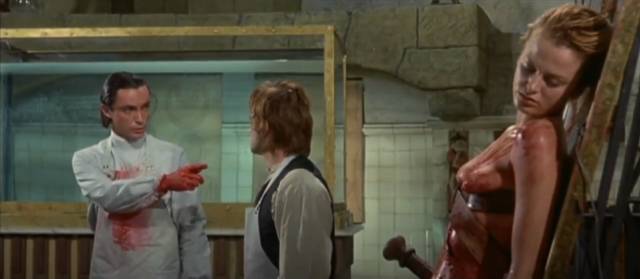
It seems almost unbelievable that Morrissey supposedly wrote the script day by day during shooting, having initially planned to use the improvisational technique of his Factory films. The story is so tightly constructed, the themes so clearly developed and the tone so consistent… And yet, coming from that unconventional background, Flesh for Frankenstein doesn’t quite conform to genre expectations. Perhaps some of the negative response was simply due to its overt homoeroticism – the camera lingers attentively on Dallesandro’s body, the cinematic machinery seeming to share Sacha’s obvious desire. This was unusual at the time in the mainstream, when male nudity (including full frontal) was pretty taboo outside of the underground from which Morrissey had come. Although horror movies had long contained coded metaphors for sex, the overt display of incest and necrophilia was too strong for some viewers. Then, of course, there was the graphic display of obviously real entrails (apparently the set got pretty smelly with all those animal parts under the studio lights). Perhaps the fact that production values seemed so high – the large, sumptuous sets, the elegant costumes, the fine formal qualities of Luigi Kuveiller’s excellent cinematography – made all the offences to conventional taste seem even worse; this stuff usually showed up in seedy exploitation movies by people like Andy Milligan which were so much easier to ignore.
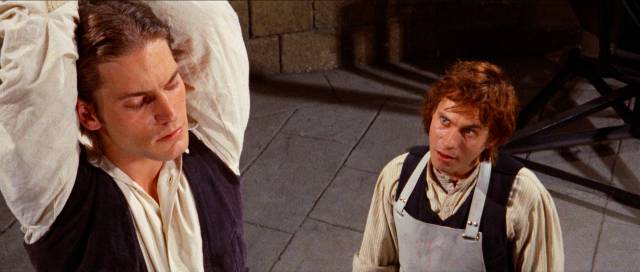
And then there are the oddities in casting. Although shot at an Italian studio, the film was made with sync sound which captured the wide variety of accents, giving it a distinctive quality quite different from most Italian-made movies, which were dubbed after editing was completed. No attempt was made to mitigate some heavy accents, but this adds to the film’s overall richness. Udo Kier has such an expressive German accent that it’s crucial to his character; it’s not surprising that the two films he made with Morrissey launched his long career (still going after more than five decades and almost three-hundred credits). Jürging’s German accent goes well with Kier’s, making them a wonderful comic duo in both this and Blood for Dracula, while Zelenovic’s soft Serbian accent matches his doleful expression perfectly.
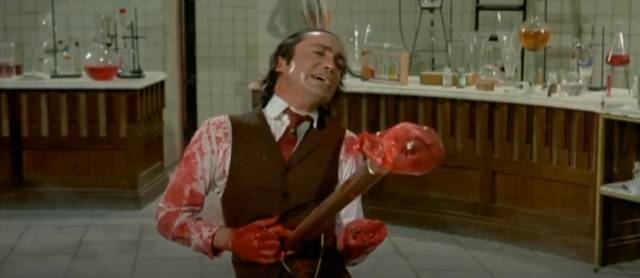
It may seem that Dallesandro’s thick New York accent is utterly inappropriate here, and yet it brings out and reinforces the underlying theme of class antagonism; the decadent European aristocracy, collapsing under its own perversion, is confronted by the crude proletarian power which sees through social convention to the rot at the core. And yet the film’s final irony is that this raw power is not ultimately enough to overthrow the corrupt establishment – the offspring of the Baron and Baroness now embody that corruption without any of the mitigating social pretensions which once provided cover for the rot.
Vinegar Syndrome have done a terrific job in resurrecting Flesh for Frankenstein. Not only have they covered all the viewing bases (I still hope to watch the digital 3D at my friend Steve’s, but the anaglyph copy has been sufficient for now; maybe one day I will upgrade to UHD, but in the meantime the flat Blu-ray provides an excellent version of the film’s rich colours), they’ve included almost four hours of new and archival interviews and featurettes, including an evaluation by Stephen Thrower, plus a three-way commentary by Heather Drain, Kat Ellinger and Samm Deighan in which they occasionally step on each others’ lines in their enthusiasm for the movie.
*
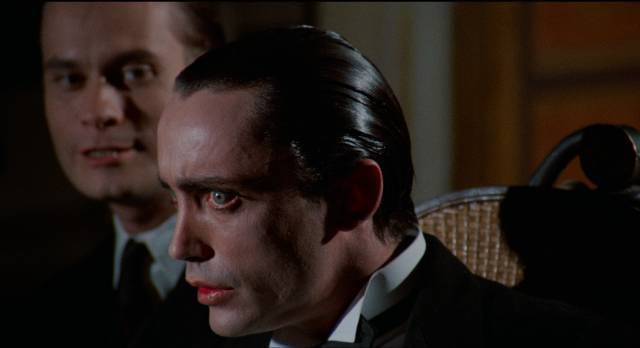
Blood for Dracula (1974)
Again from my notes, I see that I rated Morrissey’s follow-up Blood for Dracula (1974) even lower than Flesh for Frankenstein. I gave it only one-and-a-half stars, which I suspect was partly due to my disappointment that it wasn’t in 3D. Apparently that was the original plan, but the cost and technical difficulty forced a decision to shoot the new film flat. It seems strange that I rated it so low, because the movie stuck with me for decades, just like its predecessor. Not so much for distinctive visual moments, though, but more for elements of the narrative. And once again, it was decades before I saw it again – when I bought that Criterion DVD – and had a chance to re-evaluate it.
It’s not surprising that it shares many qualities with the previous film – including key cast members and cinematographer Kuveiller. But the script seems looser and it all hangs on one particular joke, making it seem thinner than Frankenstein both in story and themes. That said, however, it remains entertaining and offers many pleasures of its own, not least Udo Kier’s performance as a rather sad, sickly and whining Dracula, who finds it necessary to abandon his home in Romania because there are no more virgins, whose blood he needs to survive.
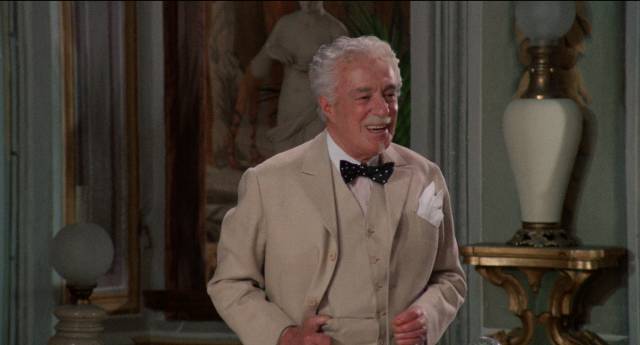
At the urging of his servant Anton (Arno Jürging again), he heads for Italy – as a Catholic country with strong family traditions, it’s bound to offer a lot of what he requires. The early scenes set the tone – the Count bids farewell to his vampire sister who is wasting away, leaving him the last of the family line; it’s a melancholy moment, but immediately undermined when Anton firmly refuses to pack the Count’s taxidermy birds – they’re old and dry and would crumble on the journey. All they can take are necessities, which include a couple of trunks, a wheelchair and a coffin strapped to the roof of the car. Along the way they explain the coffin – the Count’s bed – as a recently deceased uncle being taken home for burial.
In Italy, they hear of the De Fiore family, once noble, now broke, who have four daughters. This sounds promising so Anton pays a visit to explain that his noble master is in the area looking for a wife … he says plainly that family tradition requires a virgin bride, which doesn’t faze the Marchese De Fiore (Vittorio De Sica) or the Marchesa (Maxime McKendry) in the least. The Marchesa is concerned with the idea of the Count’s wealth, while the Marchese parses the Dracula name and is impressed by its linguistic values. It’s a surprise to see the great director in this context, but De Sica appears to relish the part of an aristocrat so wrapped up in his own trivial obsessions that he fails to notice the danger facing his family. He’s perfectly matched by McKendry, who gives one of the film’s finest performances in what was her only screen role.
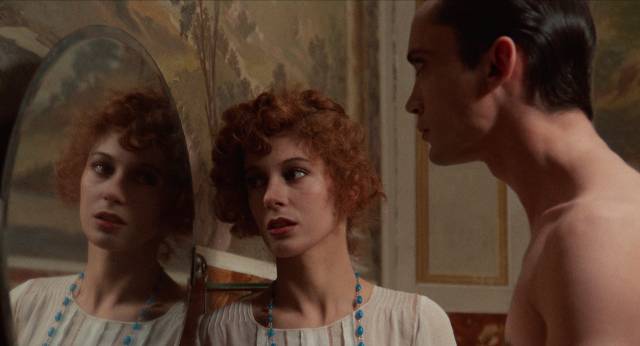
Welcomed into the house, Dracula must rally what little strength he has left as he begins to court one daughter after another, only to find that the two most eligible are definitely not virgins – they spend a lot of time in threesomes with surly servant Mario (Joe Dallesandro, of course). When he bites into their necks, the Count immediately becomes sick, turning green and vomiting the blood into an elegant bathtub. His predatory pursuit of these young women is mirrored by Mario’s sexual pursuit, with youngest daughter Perla (Silvia Dionisio) becoming a target for both (she’s supposed to be only fourteen, though Dionisio was in her early twenties) – having earlier said that he’d like to rape her, Mario essentially does that in order to “protect” her from Dracula. This leaves some blood on the floor, which the Count gets down and licks – perhaps the inspiration for a similar moment in Guillermo del Toro’s Cronos (1993). He’s discovered in this humiliating position by the eldest daughter, Esmeralda (Milena Vukotic), who is considered to be unmarriageable but turns out to be the ideal mate for Dracula – a virgin willing to embrace a vampire existence.
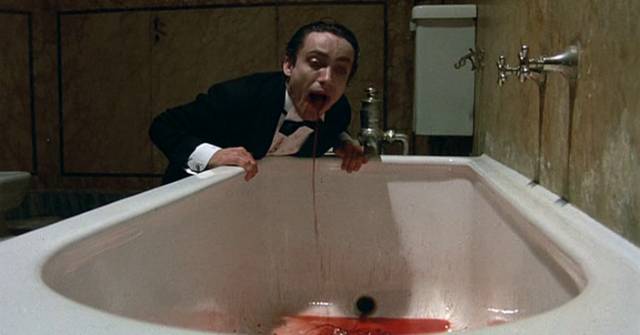
As in Flesh for Frankenstein, the coarse working class rebel upends everyone’s plans, but in this case he remains triumphant – no irony after vanquishing the pathetic creature who has outlived his time. Less graphic than the previous film and lighter in tone, Blood for Dracula seems less substantial. But it’s full of great moments, occasionally peripheral to the main narrative – like the very funny tavern scene in which Anton is mocked by locals led by Roman Polanski. Although the scene itself has little to do with the story, it does end on a grimly pathetic note as the game Polanski is playing is interrupted with news that a young girl has just been run over outside; as everyone rushes out Anton grabs a loaf of bread and follows … cut to him recounting the incident to the sickly Count, who takes the bread now soaked with the child’s blood and sucks it eagerly. This is a brilliant and original bit of vampire business.
In both films, Morrissey’s prior lack of interest and experience in the genre seems to have left him free to invent unrestricted by the need to fulfill expectations rooted in previous iterations of these stories. The films seem fresh and full of surprises and throughout there are peripheral details which enrich their narratives. Perhaps Morrissey exhausted the possibilities of this kind of genre play with these two movies because it was four years before he returned, and then it was with the utterly dire Hound of the Baskervilles (1978), an attempt at an overtly comic parody which is neither funny nor illuminating. After that, he appears to have returned to something more akin to his earlier underground work … I can’t really say as I haven’t seen any of the movies he made between 1981 and 2010.
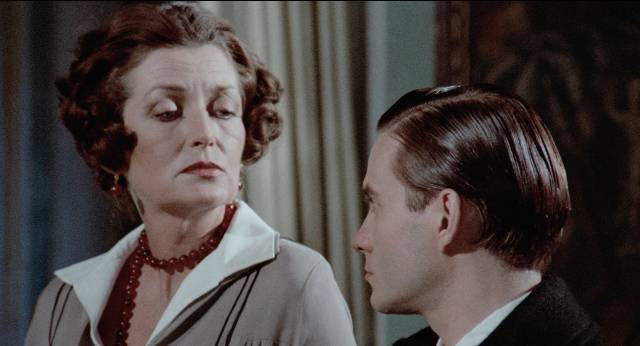
Severin, like Vinegar Syndrome, have done Blood for Dracula proud, with a 4K restoration in a dual-format edition which also includes a CD of Claudio Gizzi’s soundtrack. No commentary this time (I would have been interested to hear what the trio from the Frankenstein disk might’ve had to say about this one as the sexual politics are a bit trickier), but there are again almost four hours of interviews, including another brief evaluation by Stephen Thrower.
These two releases together get my vote for 2021 “disk of the year”.
Comments